Patek Philippe has always made watches for the highest echelons of society. From the very beginning, Antoine Norbert de Patek sold his timepieces to the customer base he knew best: members of the Polish aristocracy. Among the privileged few throughout Europe, news traveled fast about Patek’s exceptional timepieces. The super-rich of the late 1800s, early 1900s were not hedge-funders and dot.com millionaires, but people whose wealth was either inherited with an ancient title, or was accumulated with the industrial revolution, and of course, the church. Popes were just as likely to own a Patek as a prince.
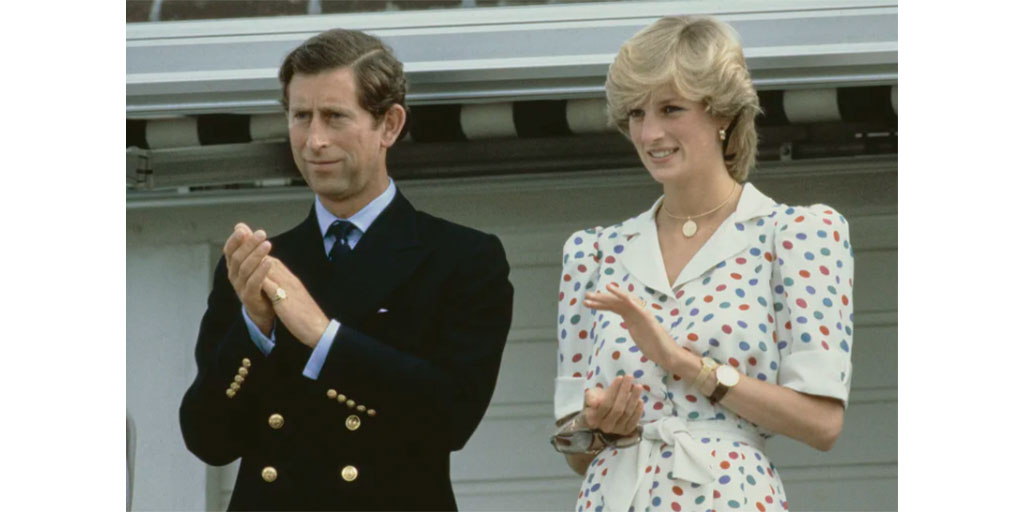
As it is today, celebrity endorsement can dramatically affect the fortunes of a company and this was certainly the case for the newly founded firm of Patek, Philippe & Cie. when Queen Victoria purchased a pendant watch for herself after visiting the Great Exhibition in 1851.

National exhibitions were a consequence of the economic and industrial development of the first half of the 19th century, and until the mid-20th century, these exhibitions would grow with more and more countries exhibiting examples of their manufacturing and artistic prowess. Probably the most famous of all these exhibitions was the 1851 Great Exhibition of the Works of the Industry of All Nations. This was held in a specially constructed Crystal Palace in London’s Hyde Park. During the 141 days that the exhibition lasted, five million visitors came to admire the work of 13,837 exhibitors. Adding to the excitement of the exhibition, on September 29, the first telegraphic conversation took place between England and France. 178 watchmakers representing Great Britain, Switzerland, France, Austria, Prussia, German States, USA, Netherlands, Denmark and Sardinia were carefully selected to participate. Patek, Philippe & Cie was one of 40 companies representing Switzerland and its exquisite timepieces were distinguished from all others by being awarded the Gold Medal and the attention of the most prestigious of couples: Queen Victoria and Prince Albert.

According to the Patek Philippe Archives, Queen Victoria purchased watch No. 4710, an azure blue, pendant watch decorated with diamonds on November 30, 1851, for the sum of 612.50 CHF.
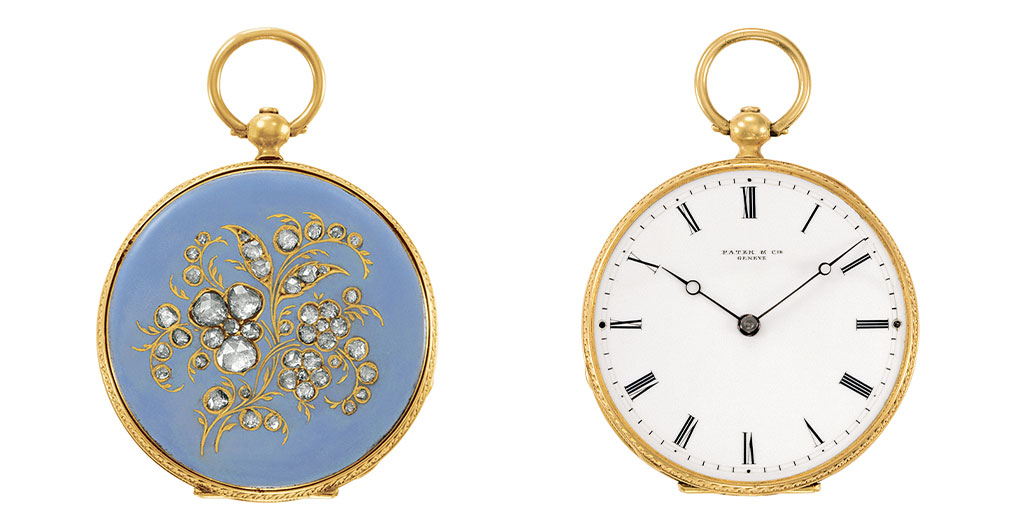
Her majesty saw this piece at the exhibition and fell in love with it and it can now be seen in the Patek Philippe Museum. According to legend, Queen Victoria bequeathed the watch to her Lady-in-Waiting in her will, a sign that the watch had a great personal value to the Queen. Interestingly, according to the Archives it was not Her Majesty’s first Patek Philippe because on August 9, 1851, she purchased watch No. 3218, a quarter-repeating (striking on demand) hunting cased pocket chronometer for Prince Albert for the sum of 1325 CHF. Sadly, the whereabouts of this watch is not known. Hopefully, it will reappear one day either at auction or at Collectability.
After Queen Victoria’s purchases, it was not long until other royal courts followed suit. Many pieces owned by distinguished imperial families from around the world can be seen at the Patek Philippe Museum. Here we present just a few of these extraordinary timepieces.

Not all of Patek’s royal fans were from Europe. In 1897, Chukalongkorn, also known as Rāma V, became King of Siam in 1868 aged 15. In 1897, as part of a world tour, he visited Patek Philippe in Geneva and purchased a total of 56 pieces during an extended shopping spree. Most of these pieces were given as royal gifts and two of them are now back with Patek in the Museum. Rāma had a long and fruitful reign and is credited for being the great modernizing monarch of the Kingdom of Siam. Among his 92 concubines, he fathered 33 boys and 44 girls. The timepiece below is an open-faced minute repeating pendant watch.
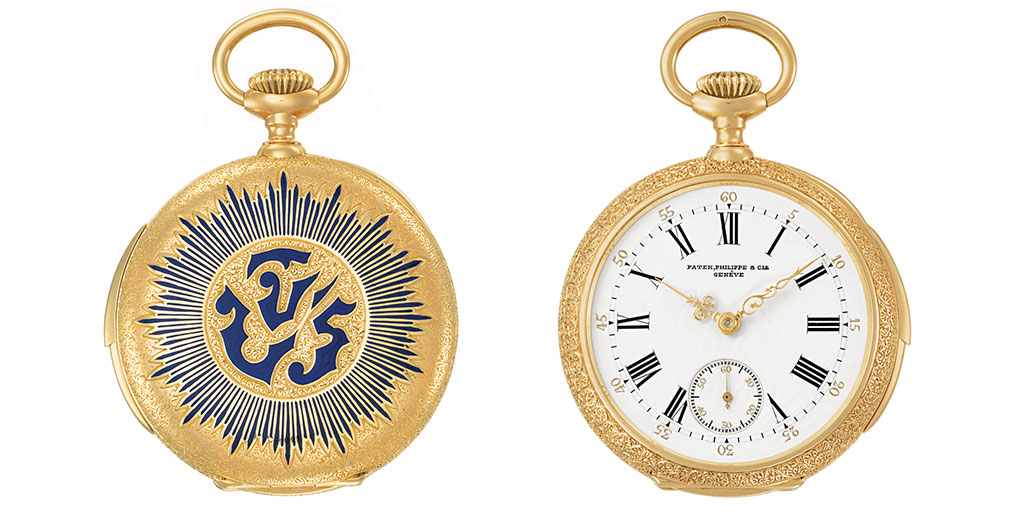
The case back is enameled in blue with the royal emblem of Siam. The cover is engraved with “Royal Grant / Year 136”. The year 136 refers to the foundation of the Chakri, the reigning dynasty of Siam (Thailand) in 1782. The 136th year of the dynasty corresponds to the year 1904 when this watch was given as a gift. The watch was originally sold to Rāma V on December 3, 1897, for 1602 CHF.
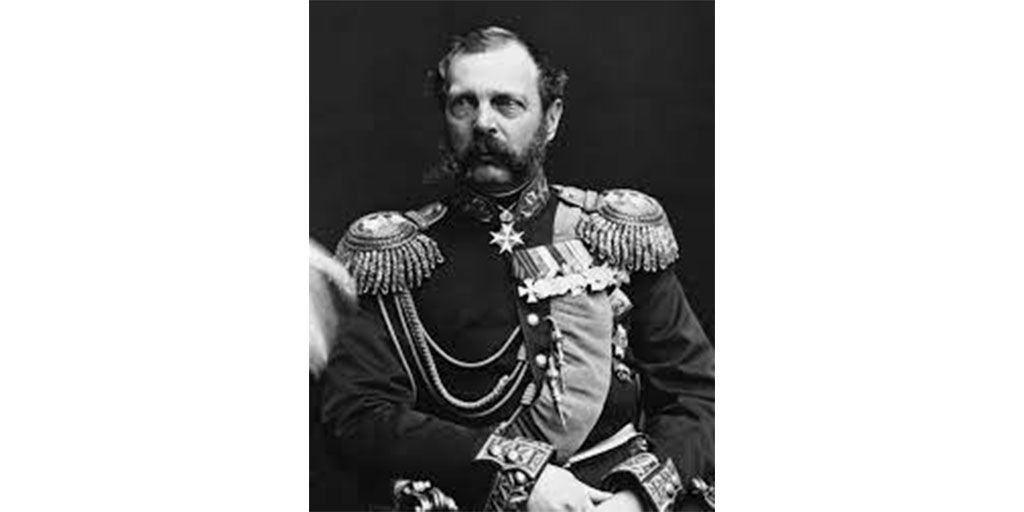
Royal timepieces can also hold secrets. One particularly poignant love affair between Tsar Alexander II Nikolayevich, Emperor of Russia (1818 – 1881) and Ekaterina Mikhailovna Dolgorukova (Katia) (1847 – 1922) can been seen in this very intimate pocket watch.

The cover is engine-turned and enameled with the coat of arms of the Dolgorouky family. The case back is engine-turned and enameled with the with the cipher “PCD” stamped with a crown.
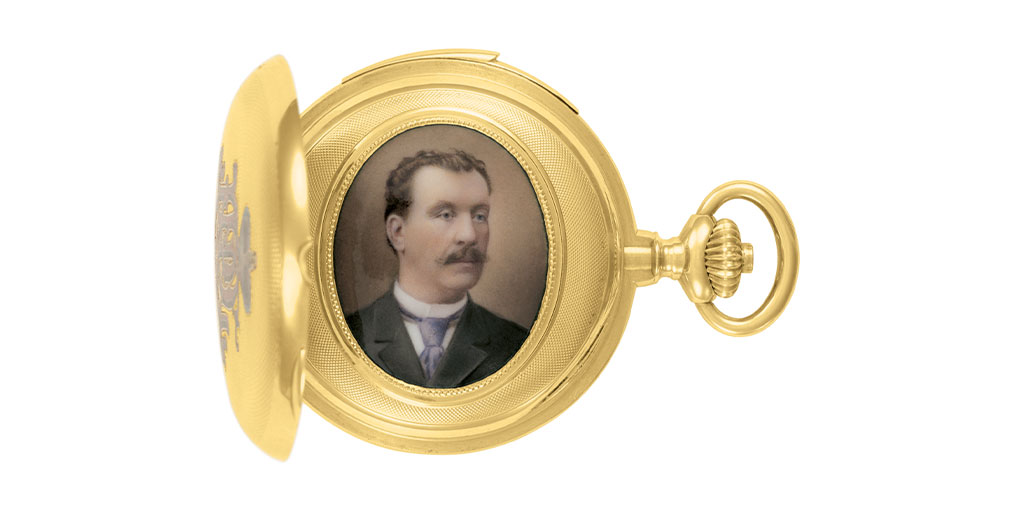
Inside the cover, is a portrait of Tsar Alexander II in civil dress. Because a portrait of the Tsar would never show him in civilian clothes, only full military regalia, we know this was a very personal possession. In 1866, Katia became the mistress of the Tsar, and to the great distress of his wife, he brought Katia to live in the Imperial Winter Palace in 1870. Despite this scandalous situation, Katia gave birth to four children (the Tsar also had eight children with his wife). When the Tsarina died of ‘flu in 1880, Alexander made his relationship with Katia official by marrying her and giving her the title Princess Yurievskaya, which was passed to her children. Tragically, their marriage was short-lived as the Tsar was assassinated in 1881. This timepiece, made in 1909, was most likely a special commission on behalf of Katia to remember her great love.

Even princes need to know the time in different time zones. This extremely rare, double faced hunting-case (a dial under each cover) pocket watch was made for Hussein Kamāl, Sultan of Egypt (1914 – 1917). The cover is engine-turned and engraved in taille-douce (fine cut) with a tughra (signature) stamped with a royal crown. The case back below is engine-turned and engraved with a signature in Arabic.

The prince purchased the watch on November 8, 1898, for 550 CHF. This timepiece was one of the earliest pocket watches to address a problem of its time.
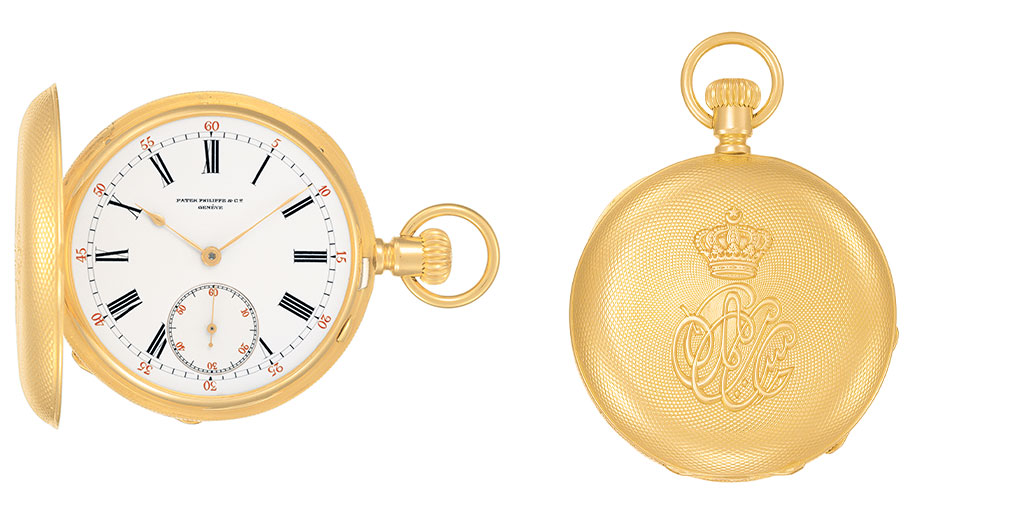
In 1876, after having missed a train, a Canadian engineer named Sandford Fleming (1827 – 1915) began to study the issue of time zones. The aim was to create some order within the confusing system of local time zones. However, it took time for the system to be accepted by national, military and colonial regimes who were not prepared to embrace “globalization”. The current time zone system was accepted at the Prime Meridian Conference in Washington, DC in October 1884, by the 25 nations who participated. It was not fully accepted worldwide until France adopted it in 1911.
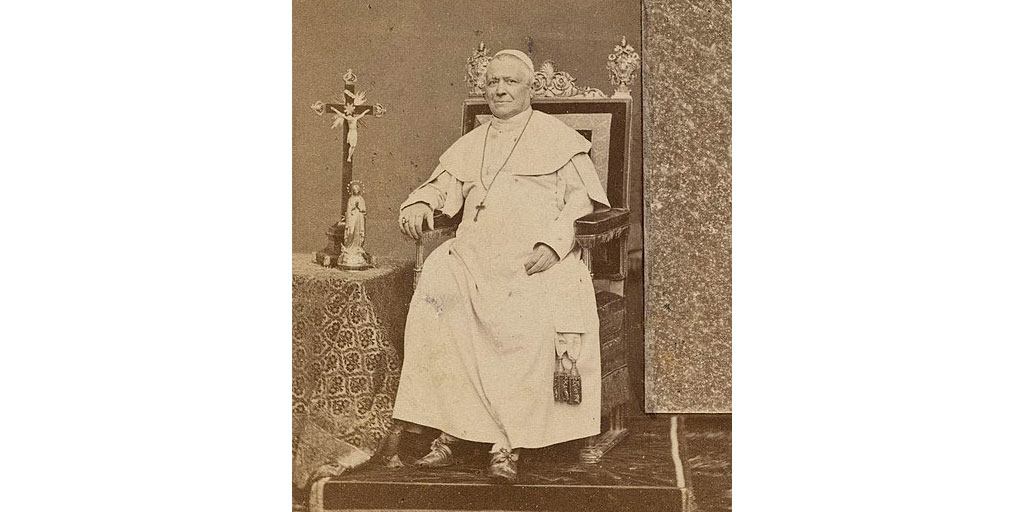
Several Popes have been presented with Patek Philippe timepieces. An early piece was given to Pope Pius IX (1762 – 1878) on June 27, 1867. It was purchased by Cardinal Gaspard Mermillod for 1370 CHF. Pope Pius IX became head of the Catholic Church at the age of 48 in 1846. He remained head of the Church until 1878, which is the longest verifiable papal reign. The hunting case cover is decorated in enamel, depicting the colors of the coat of arms of Pius IX.
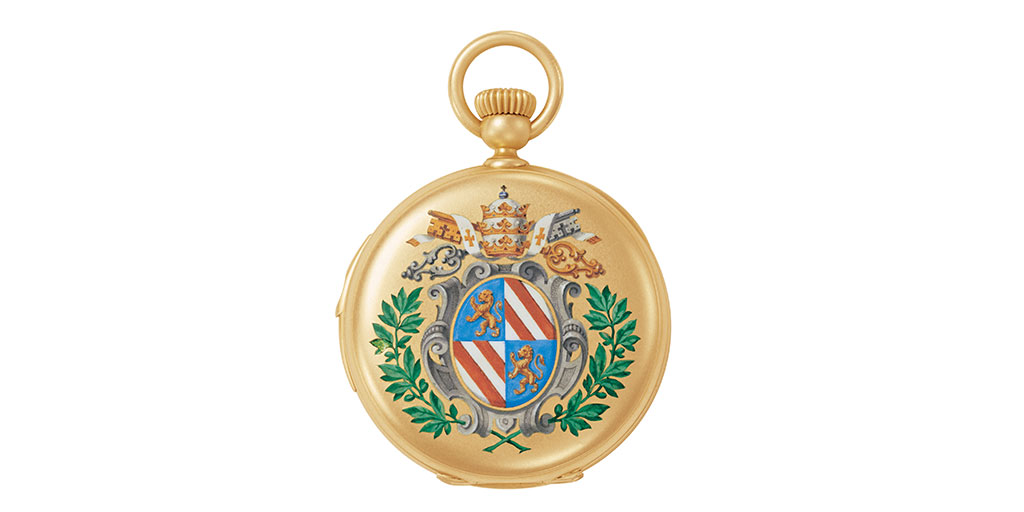
The movement with its half quarter-repeating mechanism must have chimed beautifully within the walls of the Vatican.
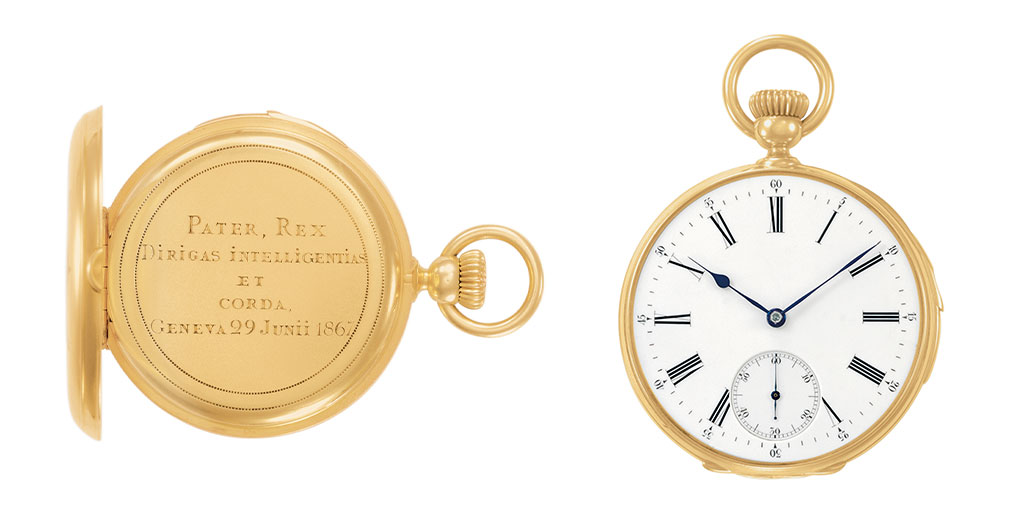
America’s Gilded Age – from the American Civil War to the end of the 1920s secured the USA as the wealthiest country in the world, and a new type of royalty emerged with many tycoons such as John Jacob Astor whose personal wealth outstripped the royal families of Europe. For the plutocrats of the US in the early 20th century, owning a Patek Philippe was a mark of success, something it still is today. Sophisticated millionaires with a passion for collecting watches drove Patek Philippe to reach new heights in developing complicated movements. Financier and railroad magnet Henry Graves Jr., amassed an extraordinary collection of Pateks including the ‘Graves Supercomplication’ which from 1933 until 1989 when Patek Philippe introduced the Calibre 89, was the most complicated watch ever made. Automobile magnet, James Ward Packard also amassed a hugely important collection of Pateks and his commissions also pushed the boundaries of watchmaking.
In more modern times, we still see members of the British royal family wearing Patek Philippe watches. Queen Elizabeth II has been photographed wearing various Pateks, and the now iconic picture of Princess Diana wearing two Pateks at the same time (keeping her then husband Prince Charles’s Calatrava safe while he played polo) was universally appreciated on Hodinkee.

More recently, the Countess of Wessex, the Queen’s daughter-in-law regularly wears the latest Twenty-4, ref.7300/1200A-001.

For those people privileged to own a Patek Philippe, it’s good to know that you’re in good company — and have been for over 175 years!


